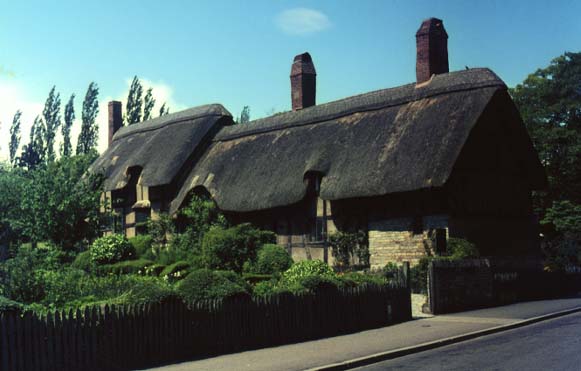Anne Hathaway's Cottage, Stratford-on-Avon

Arriving in Stratford-on-Avon, the birthplace of Shakespeare, we went to Anne Hathaway's Cottage and then drove downtown. There were a number of very attractive tudor-style buildings and a very well developed center around Shakespeare's birthplace
There was a sidewalk market in the city square and it and the rest of the downtown area were fantastically crowded, and its not even the tourist season yet!
We drove back to the car park near Anne Hathaway's Cottage and ate lunch. There were several ducks and a number of sparrows there begging crumbs. One cute sparrow had her two fledglings with her -they apparentlay were only recently "airborne". She had them staked out in two separate willow trees - on very limber twigs. When the mother managed to grab a crumb from the slow and clumsy ducks, she would carry it to one of the young ones, and while both bobbed up and down on the willow twig she would deftly poke the crumb down the eager chick's mouth.
We went throug Anne Hathaway's Cottage, and although it was not so impressive as the show put on by the sparrows, it was quite interesting. It had many old furnishings, including wooden "trenchers" for eating and straw mattresses. I learned a few things from the guide's spiel. The house, tudor style, was built about 1450. The frame of timbers was put up first and the spaces filled with mud and sticks, which hardened like adobe. In Shakespeare's time they usually ate with knife and fingers, no fork, from hollowed out wooden plates called "trenchers". When the first course was over, they turned the plate over, flat side up, for the next course which was usually cheese.
May 26, 1967
|
|

